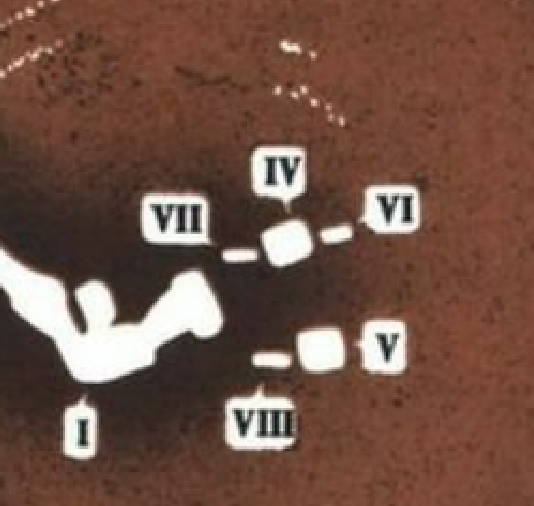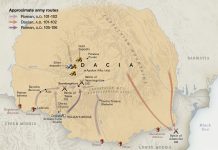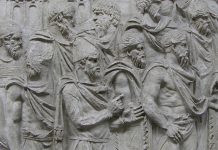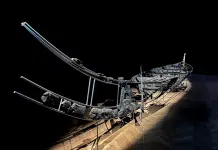As a rule, the higher the kurgan, the more horses were buried in it. From this perspective, although almost 9 meters tall Tovsta Mogyla Kurgan belongs to the second-highest kurgan group, by the number of horses buried, it equals the first one. It is closer to Great Tzymbalka, Solokha, and Oguz than to its peers Gaimanova Mogyla and Krasnokutsk. But in the number of the grooms buried in it, Tovsta Mogyla exceeds even Solokha and Chertomlyk. Tovsta Mogyla Kurgan is famous for being among very few Royal Kurgans in which archaeologists had the opportunity to record many peculiarities of the burial ritual of horses. In Tovsta Mogyla Kurgan there were two graves of horses that were accompanied by three graves of grooms. These burials were directly connected with the central grave in which a royal Scythian, most likely King, was buried. As in the majority of the Scythian Kurgans, there was a central East-West axis indicated by the passages over the ditch encircling the kurgan (see the overall scheme). From this perspective, it can be observed that Horse
Grave #1 was to the north of the line, and Horse Grave #2 was to the south of that axis. Both graves were also within the circle of the double cromlech and it should have some sacral meaning too.
Each of the two graves had three horses, but only one horse in each of the graves was harnessed. The horses in each of the graves were arranged as if in a circle, and, what is interesting, there was a “mirror” opposition between the position of the two harnessed horses. The harnessed horse in the northern grave was placed on the western side of the grave as if heading north; while the harnessed horse in the southern grave was placed on the eastern side of the grave as if heading south. Yu. Polidovych in his paper ‘Decorations of horse harnesses from Tovsta Mogyla’ stated that there was even a certain opposition between the decorations of the harnesses of the two horses. The placement of two horse graves on two sides of the main axis of the Kurgan, the arrangement of horses as if they were running clockwise, and the two main horses in each of the pits looking in opposite directions can hardly be a coincidence and draw an analogy with the famous sign known as “Ying-Yang” in our days. As a reminder, this very sign had been present in the area of Tovsta Mogyla Kurgan for millenniums before it was reported in Asia. More on the topic HERE >
The “Royal Scythia, Greece, Kyiv Rus” book has some insights into the Scythians’ perseption of horses in afterlife. Could the idea of Pegasus be originally of Scythian origin?










